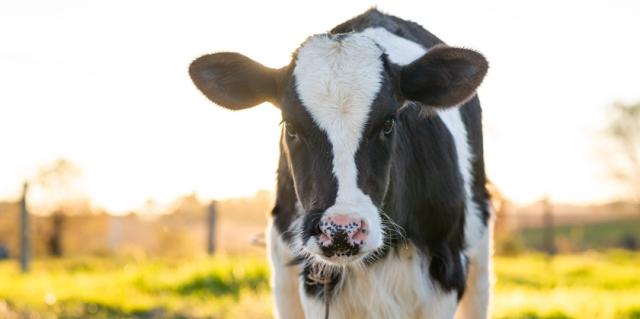Beef + Lamb New Zealand’s long-term Dairy Beef Progeny Test is entering a new phase which involves more farms and a new approach to identifying opportunities offered by superior dairy beef.

While the locations have changed, the objectives of Dairy Beef Progeny Test (DBPT) remain the same; these are to identify the best beef genetics and to highlight the value superior beef genetics generate at every stage of the supply chain.
The DBPT has moved from Pamu’ Renown farm and mating is now underway on five new host farms across three regions. Sixteen sires representing five breeds have been selected for use in the DBPT this year, although not all sires will be used on all the new host farms.
These host farms are two Dairy Trust Taranaki farms, two Massey University farms and an owner-operated commercial dairy farm at Five Forks near Oamaru. For the first time, Jersey cows will be included in the DBPT through a70-80-strong herd which is run on one of the Dairy Trust Taranaki farms.
Jim Inglis, Beef + Lamb New Zealand Genetics’ Strategy and Operations Manager, says the move to run the DBPT across more sites was driven by a desire to include a better cross-section of farms across more regions and to better showcase the outcomes of the DBPT.
He says the host farms were sourced through contacts and word of mouth and all met the criteria of mating a minimum of 200 commercial dairy cows. B+LNZ Genetics will be looking for more DBPT host farms in the near future.
“We will be looking for more farms to get involved, particularly in dairy-centric regions such as Canterbury, Southland and Northland,” says Jim.
Two of the three new host farms will be rearing and finishing the progeny within their own farm systems, but Jim says they are looking for finishers for the calves born on the Dairy Trust Taranaki farms.
He says as hosts of the DBPT, dairy farmers will be required to record mating dates, pregnancy diagnosis, calving dates and calf weights.
Rearers will need to rear the calves in cohorts, record how they are reared and the weights and date of weaning.
Finishers will be required to record 200,400 and 600-day weights and B+LNZ will organise a contractor to eye-muscle scan the cattle prior to slaughter.
Finishers will then need to submit slaughter data, but not payment information.
Jim says to ensure a fair comparison of the genetics, finishers will need to run the DBPT cattle in mobs which represent the sires used.
Cattle breeding specialist Craig Foote will help farmers determine the make-up of these mobs.
Jim says another advantage of having more farms involved in the DBPT is the range of cow breeds now included in the Test.
While these are predominately Kiwi-cross cows, Dairy Trust Taranaki runs more Friesian-cross type cows along with a its Jersey herd.
“Across the five farms we are seeing a good representation of the types of cows we see on dairy farms across the country.”
Having two Massey University dairy farms involved in the DBPT builds on the existing connection between Massey and B+LNZ’s DBPT.
Massey University geneticist Nick Sneddon has been sub-contracting to the DPBT (taking over from his predecessor Rebecca Hickson) and now the University is hosting the Test on two of its farms, it does open the opportunity for complementary research and more open days.
For example, the DBPT cattle can be run within Massey University’s Whenua Haumanu regenerative agriculture research programme.
Jim says Massey University regularly hosts field days on their farms and this will help make more farmers aware of the DBPT and they can see first-hand the value of using superior beef genetics in their dairy herds.
The DBPT began at Limestone Downs in 2015 and subsequently moved to Pāmu’s Renown Farm. Progeny were reared and finished under commercial conditions at Pāmu’s Wairakei Estate. The progeny born this year on Renown Farm will be followed through to finishing.
The DBPT remains open to bulls of all breeds and the breeds used this year are Angus, Charolais, Hereford, Murray Grey and Simmental. A sire list for the 2024 mating can be viewed on the B+LNZ Genetics website.